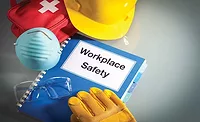The Importance of Project Safety Scheduling for Roofing Contractors


There are many project scheduling methods and programs available out in the construction world. Depending on your age, some are more preferable than others.
Pull Planning is the current “best-dressed candidate” in the marketplace. In oversimplified terms, lean construction begins by sequentially flagging the tasks, steps and phases of the project beginning with the finish date all the way back to the start date identifying in reverse sequence those multi-contractor’s activities that can be reasonably compressed to reduce their duration period. It depends solely on the collaboration (and buy-in) of all parties to the contract, once the bid has been awarded. It incorporates the backward-pass method of pulling every contractor’s and subcontractor’s activities into the schedule starting from date of completion back to their start date. This requires multiple group meetings of all proposed contractors/subs with the steps of their work phase each itemized on colored sticky notes. Basically it is a reverse method of completing the project discussing their interface between other trades working ahead and behind them. Primavera P6 is among popular computer programs incorporating pull planning, utilizing advanced algorithms, customized to each participant’s data entry.
Several decades prior to lean construction’s inception, critical path method (CPM) was the schedule of choice. CPM assigns duration estimates for each activity listed in the project, developing linkages between critical activities (nodes) describing the order of their execution, from start date to finish date. It sequentially models the entire project step-by-step, identifying landmarks where specific tasks are integrated in time. CPM begins with the forward pass (start to finish) by optimistically calculating each activity (or step’s) earliest start and completion dates. Next, the scheduler performs a backward pass (finish to start) beginning with the last activity on the project’s substantial completion date and moving backward establishes each step’s late start and finish dates. With these two sets of dates (early and late), the scheduler calculates each activity’s total float by calculating the difference between late and early dates. The mean of this range develops the schedule’s flexibility (or critical path). If a roofing subcontractor has been awarded a subcontract, they would be challenged by the project manager to explain their contract’s critical path logistics in relation to other contractor’s CPM, defend their scheduled activity durations as well as detailing how lost schedule days will be regained while still meeting the project’s next node along the critical path. All of this would be accomplished without incurring additional costs or causing ancillary delays downstream in the schedule. Schedule delays earlier than the midpoint will affect the greatest number of activities in the schedule, while delays later than the midpoint will potentially affect the least number of associated activities and integrated tasks.
The third method of project scheduling is folded into what was generically known in the 50’s and 60’s as the voodoo method of estimating, where the roll of project plans and specifications were weighed and multiplied by a “magic number” to produce the material-labor-equipment estimate. The CEO would then add to that the overhead and profit numbers in order to calculate total lump sum on the bid form, which always ended in his personal “magic” number. The gross schedule would span from the contract award date up to the substantial completion date stipulated in the bid package. Then these days, weeks or months would be arbitrarily divided by five to establish the five phases of the job on the calendar: mobilize, selective demolition, new construction, punchlist, and demobilize.
Weekly contractor progress meetings were not as common 40 years ago and, if they happened at all, they were conducted by the architecture firm’s newest hire, who was much too busy with shop drawings, change orders and redraws, requests-for-information (RFI), product submittals, pay requests approvals, site inspections and as-built drawings to chair a meeting much over 10 minutes. It was suggested we try not to win over 30 percent of our bids, because it would probably bankrupt the contractor and send him into liquidated damages for missing the completion dates. What astounds me to this day, is the high number of bid awards we actually won using the voodoo method of estimating and scheduling.
CP Schedules Safety
But that’s all water through the turbine now, as we find ourselves almost one-fifth of the way through the 21st century. The pull planning and CPM scheduling methods are now well-established in collegiate project management textbooks. Most substantial subcontractor bid packages issued today contain a separate line item for project safety. Most large prime contractors issuing an invitation to bid have developed a reasonably expected range of lump sums representing a contractor’s cost of working safely on a project.
Over 30 years, I have heard from many estimators that this line item can range anywhere from 4-12 percent of the gross bid amount, depending on the size and duration of the project. The three primary methods of hierarchical hazard control are: engineering controls; administrative (work practice) controls; and personal protective equipment (PPE) controls. Each of these control methods incurs materials, labor and equipment costs in order to implement them in the bid. The time required to competently design, select, install, evaluate and verify effectiveness of each control method during the project requires a competent person’s experience and historical data to derive a CPM schedule. For instance, a multi-employee personal fall arrest system may serve multiple contractors on during different time phases and require significant costly and time-consuming deployments and alterations. Additionally, each hazard control method has a projected “lifetime” depending on the quantity, quality and serviceablity of the control. Hazard identification is the key to accurately estimating the cost of controls and deployment time. Determining whether the specific jobsite hazard can be abated (effects significantly reduced) or mitigated (effects entirely eliminated) is the task of the employer’s competent person (CP), defined by OSHA as:
“One [an employee designated by employer] who is capable of identifying existing and predictable hazards in the surroundings or working conditions which are unsanitary, hazardous, or dangerous to employees, and who has [the employer’s] authorization to take prompt corrective measures to eliminate them.”
The code further states:
“Such [accident prevention] programs shall provide for frequent and regular inspections of the job sites, materials, and equipment to be made by competent persons designated by the employers.”
These definitions are helpful in determining the value-added characteristics of this employee during the estimating and scheduling phase of the bidding process. The CP’s delegated authority “to take prompt corrective measure to eliminate,” (or mitigate) the identified hazards, implies using one or two of the three control methods. For instance, engineering controls may eliminate a toxic atmospheric hazard by installing a negative pressure exhaust fan and establishing a verified source clean make-up air. Lockout-Tagout procedures may also temporarily eliminate the hazards stored potential energy during a work task. Administrative hazard controls may potentially eliminate (or reduce) hazardous effects, depending on the hazard. Apart from the net costs of implementation, the CP must evaluate the time required to design, install, deploy, inspect, dismantle and remove the hazard control apparatus.
Site-specific, task-specific employee safety training will give the worker sufficient knowledge to apply to his job and location to electively avoid a specific hazardous exposure. The CP has the authority to “promptly” implement the administrative hazard control of removing workers from the danger zone (e.g., workers located underneath a suspended load) until the (falling object) hazard no longer exists. Administrative controls may include either assigning exposed employees to non-hazardous tasks or staging them in a non-hazardous location, until such time the unexpected, unscheduled hazard is mitigated. Personal protective equipment will never provide the required hazard elimination, but rather invite the hazardous substance, energy or condition into closer proximity to the worker’s body. Personal fall protection using an ANSI-approved full body harness, SA lanyard, and anchorage system does not totally eliminate the hazardous consequences of an arrested fall, whereas an OSHA-compliant guardrail system may be considered an effective engineering control to prevent falls. PPE is designed and manufactured to an American National Standards Institute (ANSI) standard, wherein the equipment must be tested to a standard “failure point” beyond which the wearer is not protected. PPE is also easily lost, damaged, deteriorated or otherwise made ineffective during use, and when so determined by CP inspection, should be immediately replaced with new equipment. Therefore, there is no absolute assurance that PPE will necessarily “eliminate” any employee exposure to hazards.
Furthermore, the overall effectiveness of engineering or administrative hazard controls must be evaluated during “frequent and regular” site inspections by the CP to determine their actual on-site, real-time effective hazard elimination. The CP must have unlimited access to the pre-bid document package as well as access to a pre-bid site inspection with the project manager or engineer letting the bid, in order to determine all of the potential hazards on site and estimate the time and money required to mitigate them for the duration of the bid project.
Criteria for Safety Scheduling
There is no one-size-fits-all solution to applying employee standard safe work practices to a construction schedule. A three-phase risk/benefit analysis of any project schedule would consist of hazard identification/mitigation; net profits vs. gross costs; and contractor’s historical productivity/efficiency factors. The subcontractor’s notable variables include the age, experience, skills, and training of each individual on the crew. Simply change the crew, and you alter the schedule.
The overall slope angle of most task-vs-time construction schedules lie between 45º and 60º. Pull method schedules tend to be “steeper” than critical path method schedules. There are no net benefits to being the lowest bidder with the shortest schedule, if it inevitably results in injuries, illness or death to employees. Less than 25 percent of contractors who experienced a workplace fatality survive in the marketplace more than five years.
According to the BLS, the average cost of a workplace accident is actually 90 percent indirect and unseen. If the contractor’s annual profit is between 4-6 percent, how many years will investing 50 percent of his profits in paying off his losses return his books to net-zero? Additionally, this 50 percent payoff is based on having no recordable accidents or OSHA citations in the interim. Nor is there any simple method to determine the time, space and money required to perform any one task on your schedule while maintaining compliance with every recognized, applicable safety, health and environmental standard. Single contractor solo construction project’s hazards may vary greatly but they become insignificant when compared to a multi-employer worksite with 300 workers employed by ten contractors working on a 30-day, 24-hour mill maintenance “shut-down” project.
I once read a national insurance actuarial survey of the construction trades, which assumed that two workers employed by a single contractor on a Friday site would have individual risk assessment values of X. If on the following Monday two additional workers from a second independent employer arrive on site, all four employees now have individual risk factors of 16X. Following this logic, risk factors will rise exponentially when on Tuesday 10 new contractors send 30 additional workers each to the same multi-employer worksite. In addition, any reasonable expectation of the original two-man crew completing their assigned tasks in both a safe and timely manner on Tuesday would be greatly reduced. While they may be only 50 percent efficient on a multi-employer worksite (compared to working solo), they may reasonably drop to 30 percent efficient when working in strict compliance with OSHA standards.
When the CP scheduler is currently trained in and familiar with the OSHA standards applicable to their scope of work on a multi-employer worksite, the accuracy of his project modeling will improve. When the CP’s experience is based on a data history compiled from previously completed jobs, the confidence rating of the construction schedule will reach a higher level. The project management model must always follow the prime directive of competency: safety, quality, and productivity.
The top root cause of construction accidents is lack of work planning and scheduling, which comprises the first section of any site-specific safety and health plan, the employer’s mission statement. Job safety cannot be simply dove-tailed into a schedule to meet the critical path, but at its core, the critical path must integrate jobsite safety into every job task. The longer the data history of applying safety first, the better the quality and correspondingly the higher the efficiency (i.e., productivity) levels.
Employee Perception of Productivity vs. Safety
According to a 2015 National Safety Council survey of 2,000 American workers, one-third of them “believe productivity is of higher importance in their workplace than safety.” But when the survey was exclusive to the construction industry, more than 60 percent “felt safety was less of a priority than finishing tasks (sic, on time).”
This same study revealed that 48 percent of workers say regular training and safety meetings “were not held as often as they should be.” It is no wonder that “half of those workers surveyed said they were afraid to report safety issues” to their employer. The same blog stated that, if workplace productivity and safety were considered opposing teams on the field, the score would be 4-0 in favor of productivity.
So if implementing safe work practices (engineering, administrative and PPE controls), performing regular CP site inspections of jobsite material, labor and equipment, and conducting site-specific training according to the employer’s safety and health program prevented even one employee’s injury, illness or death, the final score should be considered in favor of safety competently scheduled.
Looking for a reprint of this article?
From high-res PDFs to custom plaques, order your copy today!






